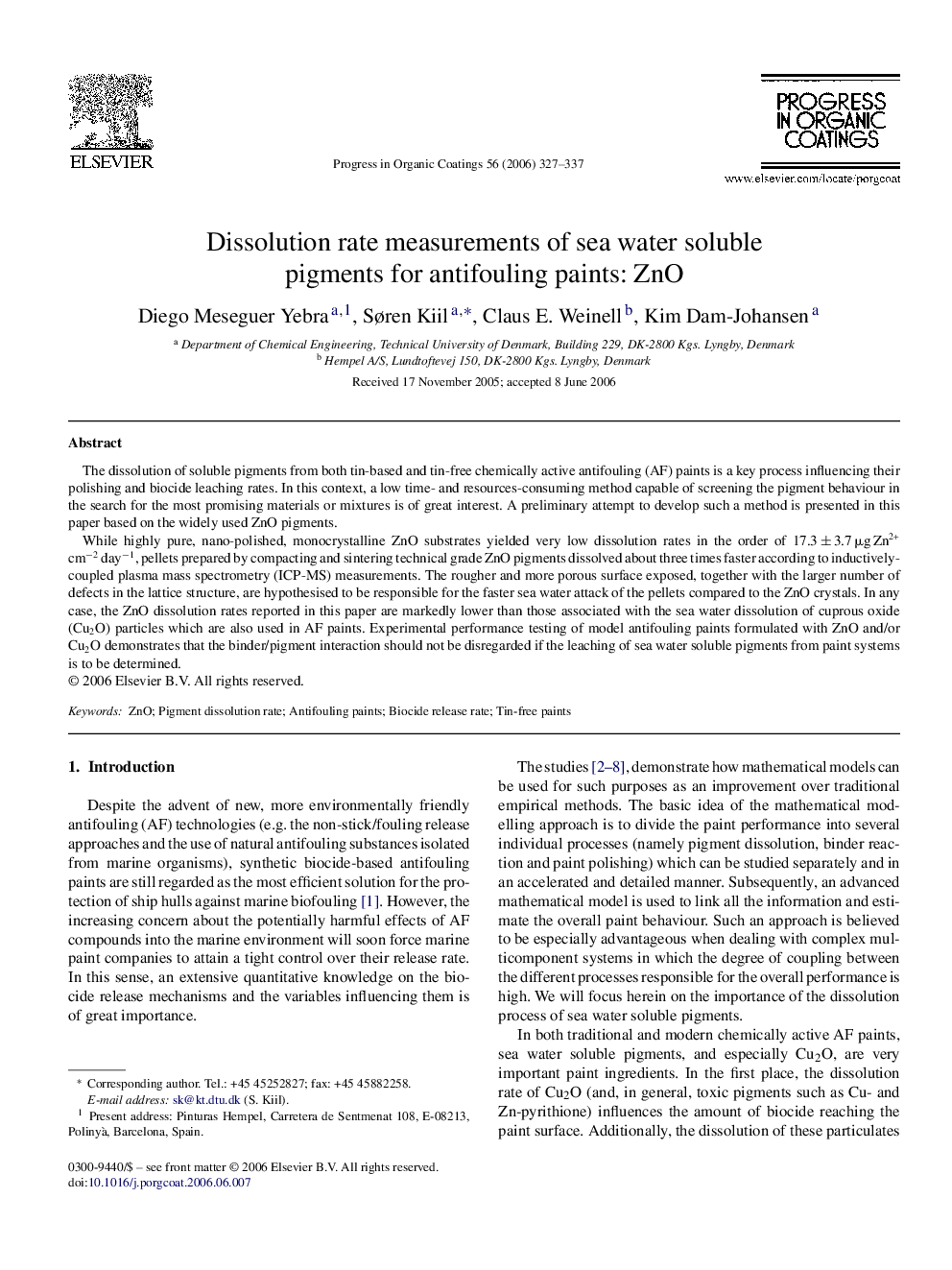| Article ID | Journal | Published Year | Pages | File Type |
|---|---|---|---|---|
| 693970 | Progress in Organic Coatings | 2006 | 11 Pages |
The dissolution of soluble pigments from both tin-based and tin-free chemically active antifouling (AF) paints is a key process influencing their polishing and biocide leaching rates. In this context, a low time- and resources-consuming method capable of screening the pigment behaviour in the search for the most promising materials or mixtures is of great interest. A preliminary attempt to develop such a method is presented in this paper based on the widely used ZnO pigments.While highly pure, nano-polished, monocrystalline ZnO substrates yielded very low dissolution rates in the order of 17.3 ± 3.7 μg Zn2+ cm−2 day−1, pellets prepared by compacting and sintering technical grade ZnO pigments dissolved about three times faster according to inductively-coupled plasma mass spectrometry (ICP-MS) measurements. The rougher and more porous surface exposed, together with the larger number of defects in the lattice structure, are hypothesised to be responsible for the faster sea water attack of the pellets compared to the ZnO crystals. In any case, the ZnO dissolution rates reported in this paper are markedly lower than those associated with the sea water dissolution of cuprous oxide (Cu2O) particles which are also used in AF paints. Experimental performance testing of model antifouling paints formulated with ZnO and/or Cu2O demonstrates that the binder/pigment interaction should not be disregarded if the leaching of sea water soluble pigments from paint systems is to be determined.
